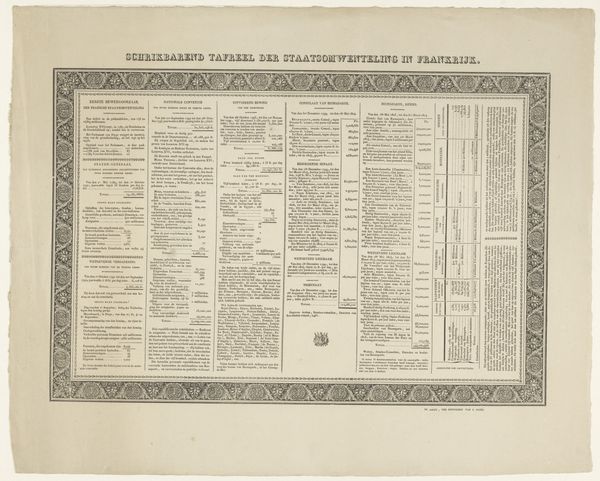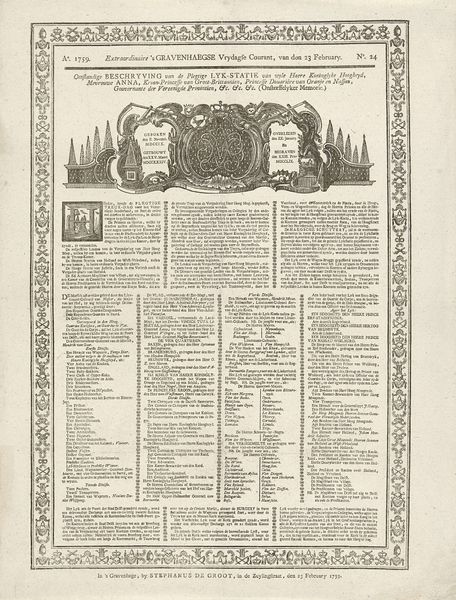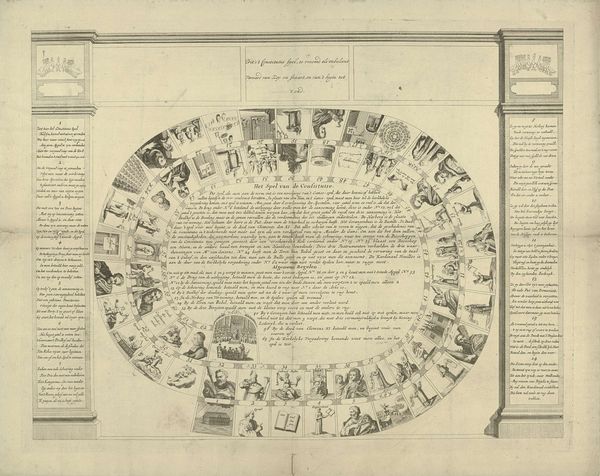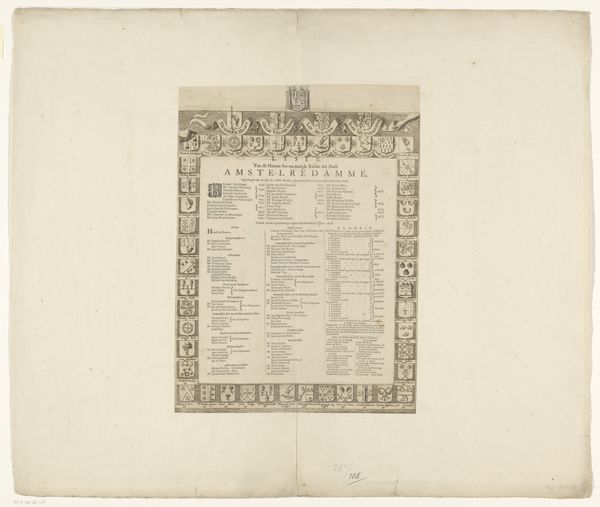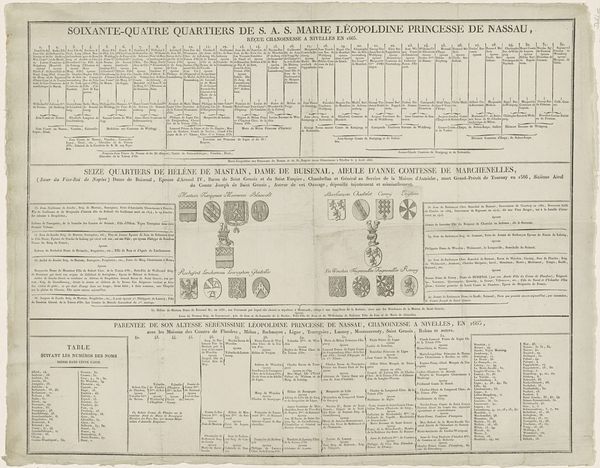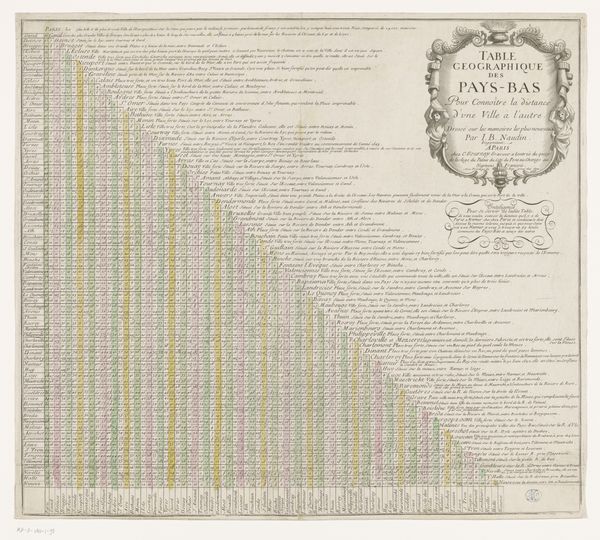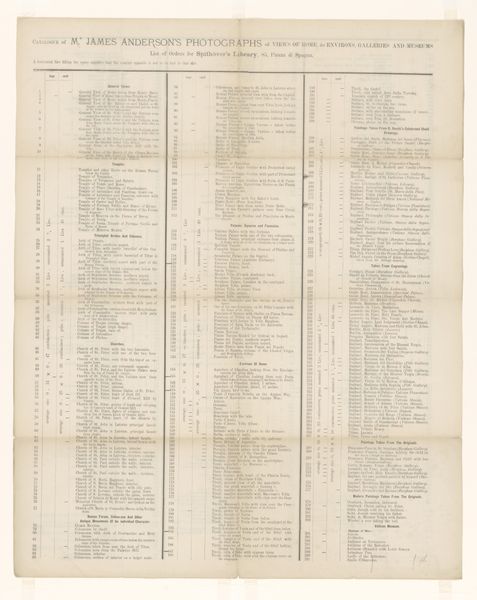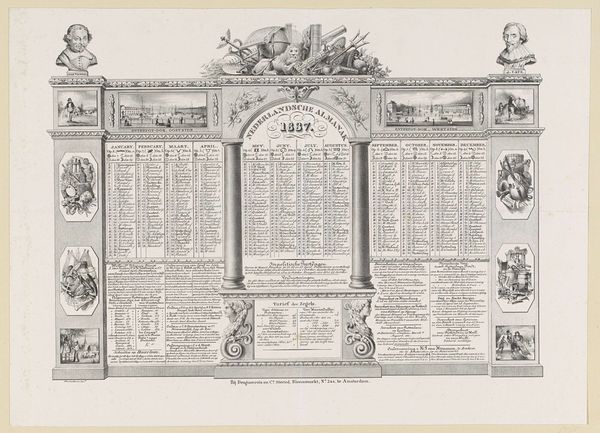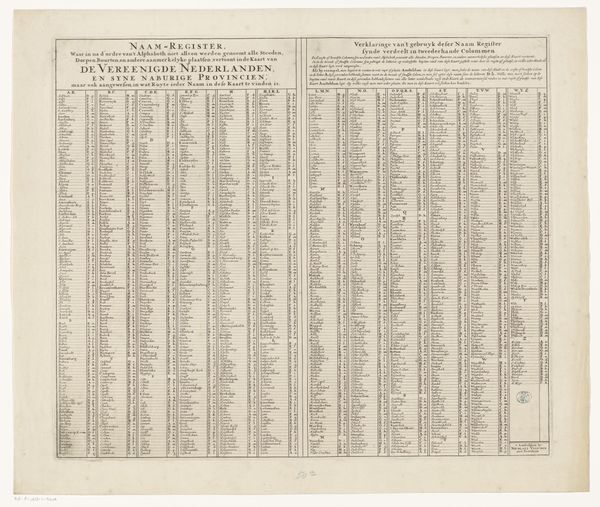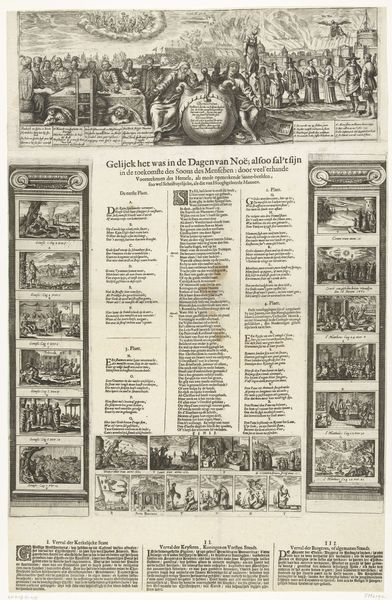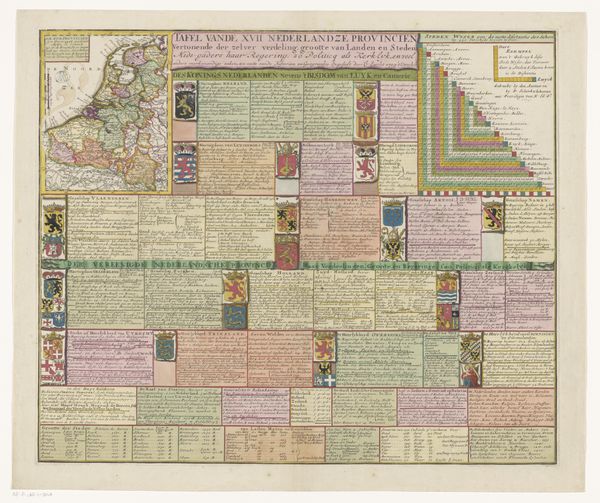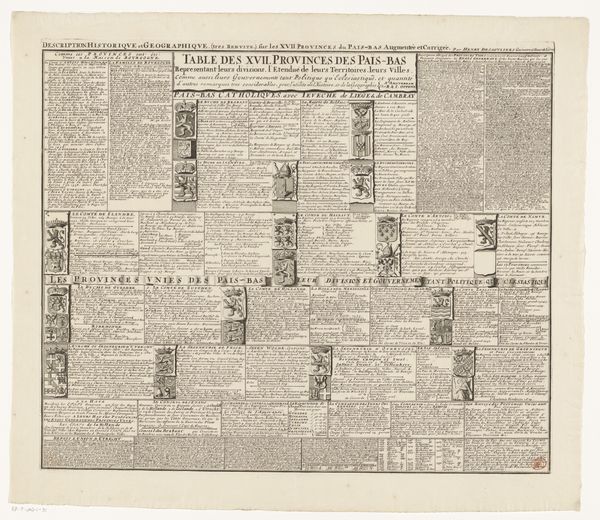
drawing, print, paper, ink, engraving
#
pen and ink
#
drawing
#
baroque
#
parchment
# print
#
paper
#
ink
#
history-painting
#
engraving
Dimensions: height 537 mm, width 607 mm
Copyright: Rijks Museum: Open Domain
Ambrosius Perling created this family tree of the Dutchy of Savoy sometime between 1675 and 1715, using engraving on paper. Engraving isn't painting or sculpture, but it certainly is a skilled practice, requiring careful handling of sharp tools to make crisp lines. Look closely, and you can appreciate the even pressure and control needed to produce this print, line by line. This is a work of reproduction, in more ways than one. The print repeated an established image, making it available to a wider audience, and it represented the family lineage, literally reproducing the family line for public consumption. At the time this print was made, the technology of reproductive printmaking was crucial to the expansion of knowledge, dissemination of propaganda, and circulation of taste. Consider the labor involved in the process, from the engraver to the printer. In this context, print wasn't just a medium, but a system of production, tied to wider social issues of labor, politics, and consumption. Paying attention to materials, making, and context allows us to fully understand the meaning of an artwork.
Comments
No comments
Be the first to comment and join the conversation on the ultimate creative platform.

